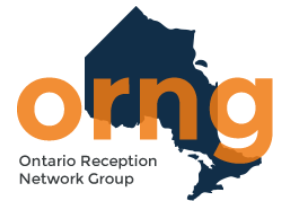
We collect basic website visitor information on this website and store it in cookies. We also utilize Google Analytics to track page view information to assist us in improving our website.
Part 1 of 4
By: Ontario teachers who are ESL/ELD school board leads and ERGO members as part of the ERGO Reading and ELLs working group as a subgroup of the Special Education and English language learners.
This small group of ESL/ELD board leads has met throughout the 2020-2021 school year to explore the topic of reading instruction and best pratices to support English language learners in Ontario school boards. The purpose of the group is to report back to the larger group of ERGO members who have explored the resources and research focussed on the topic of special education and ELLs. This is the first of a series of blogs that summarize some of their observations, the existing research, best practices and resources available to Ontario teachers supporting ELLs in their journey to learning to read and write in English while participating in curriculum learning at their grade level.
Imagine arriving in Canada as a kid from a refugee situation. This means you’ve left your home country and were forced to move to a neighbouring country who has permitted you to live in some degree of safety. Or you could have arrived in Canada by a choice your parents made to start their education again in an Ontario college or university program. Or, your parents may have moved to Canada and you were raised in a home and possibly a community that spoke a language other English.
Imagine all the hopes, dreams, fears, money, excitement and sadness that are wrapped up into this life in Canada for all of these students.
Students are continually arriving at Ontario schools from countries around the world for a variety of reasons. They may be joining our schools soon after arriving in the country or through secondary migration after living for a time in the Greater Toronto Area (GTA) or another city in the country.
Ontario educators welcome students born in Canada or who have arrived from other countries and speak languages other than English throughout the year into K-12 classrooms. Learning to read in English is one skill these students begin to work on as soon as they join an Ontario school.
Educators often post languages other than English on their walls to ensure multilingual students can make connections and see their linguistic identity reflected in the environment. These might be in the form of purchased or board made posters, but more often are hand-made by the students themselves or with the help of multilingual families.
Teachers begin to program for students by referring to the initial language assessment report and/or by using the STEP OLB Continua( for ESL programming) or the STEP OLLB Continua (for ELD programming) to document language behaviours across subject areas within the first week or two in the classroom. Primary, junior or intermediate teachers who are new to using the STEP resources may refer to the Planning With The STEP Resource videos from Elementary Teacher’s Federation of Ontario (ETFO).
This documentation for oral, reading and writing informs the teacher what the next steps for language learning are as part of curriculum learning. The STEP Continua is used as the assessment for learning or the diagnostic, but also a working document throughout the year.
Published Resources Purchased by Ontario Schools
Teachers in school boards across Ontario refer to the books or levelled readers provided in their schools to guide their reading instruction with all students, including ELLs. There is a wide variety of published resources that schools and boards purchase. These can include:
BAS Assessment - Fountas and Pinnell
These purchased resources from publishers have many strengths and challenges for ELLs. They are not often originally created for the needs of ELLs. These programs fall on a spectrum that range from relying on where teachers follow a written script or prescribed set of lessons. School boards and schools make decisions to use these various programs that are purchased to support struggling readers, readers with learning difficulties and/or for guided reading lessons with all students. Teachers are trained on the components of the purchased resources. Though teachers often do not choose the texts and resources in their schools they can use them to support the reading instruction of all their students.
Students with limited prior schooling (LPS) may have gaps in their education due to an inability or opportunity to attend school. These are often, but not always, students arriving from refugee backgrounds. They could include students with special education concerns that were not permitted to attend school in their country of origin.
Students with limited prior schooling (LPS) may not have developed literacy and language skills appropriate for students their age. While students may lack academic experience, they bring with them many life experiences and knowledge. Students with gaps in their education or limited prior schooling (LPS) require English Literacy Development (ELD) programming (elementary) or ELD courses (secondary) to support language learning as well as foster accelerated literacy and numeracy growth. Students with limited prior schooling benefit from focused early reading instruction and guided reading. You can learn more about guided reading here: guided reading videos with Ontario educators.
Reflective Questions for Teachers -
There are many multilingual students who attend classes in Ontario via a face to face environment or virtual learning environment.
Questions About Teaching Reading With ELLs -
Members of the English Resource Group of Ontario meet regularly in working groups to explore topics related to the Ministry’s ESL/ELD Policy document and related resources to help provide their school boards with relevant information, research and insight to supporting the needs of all Engish language learners. Feel free to add additional questions or insight you may have as an Ontario educator supporting ELLs in the comment section below.

